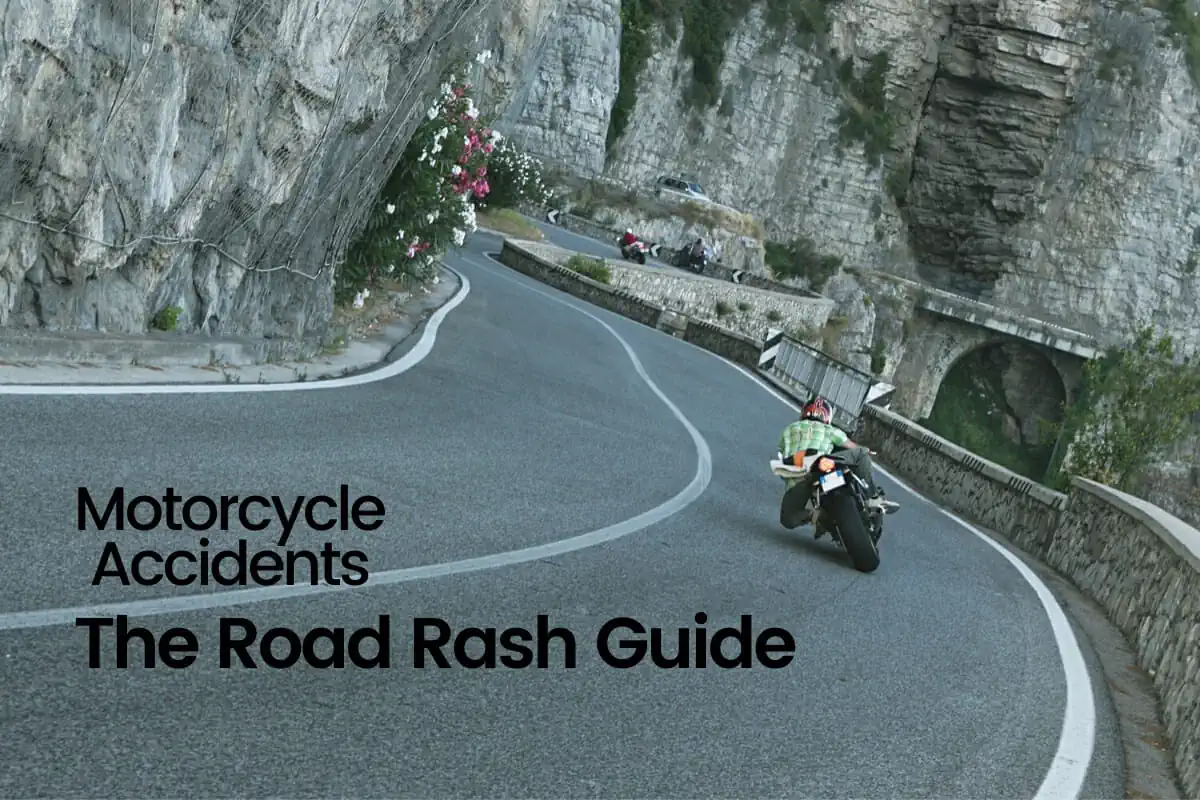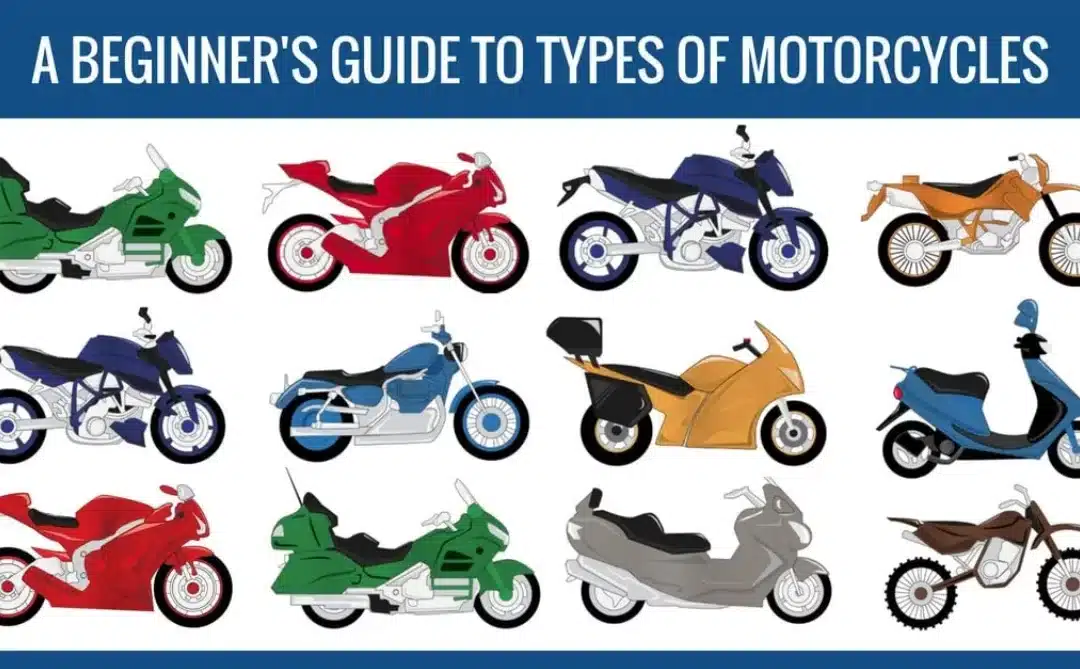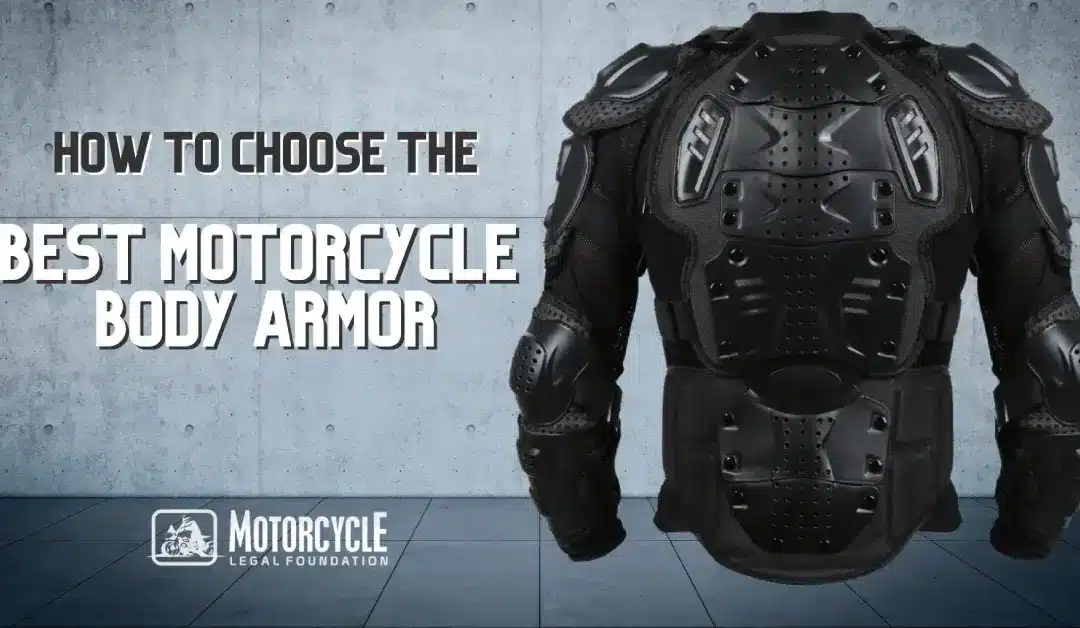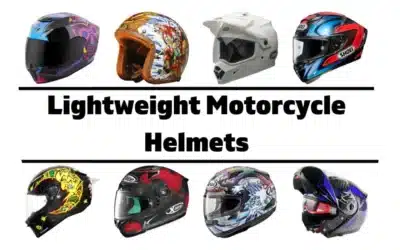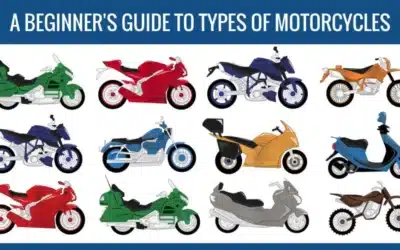We’re always here to help you in the best way that we can. before diving into this guide, it’s important that we encourage you to seek legal advice if you’ve been involved in a motorcycle accident. Click here to speak with one of our attorneys.
According to the National Highway Traffic Safety Administration, motorcycle riders are 5x more likely to be injured in a road accident than motorists in an enclosed vehicle. And one of the most common injuries is road rash.
Based on the most recent study from the National Trauma Data Bank for this type of motorcycle injury, there were a little over 20,400 reported road rash cases in 2013. While the majority (over 17,000) were recorded as slight injuries, about 2,000 cases required acute care or rehabilitation, and 400 resulted in death.
Unsurprisingly, approximately 89% of the cases were male, with an average age of 40 years.
So what exactly is road rash, and how serious can it be?
What is Road Rash?
The term “road rash” covers a range of injuries when the body comes in contact with a road surface. For motorcycle riders, this is commonly associated with skin abrasions or burns caused by hitting the asphalt or gravel.
In legal terms, however, there are two distinct types of road rashes:
Avulsion injury – The most common type, this is when the skin surface is abraded or stripped away due to friction. Some cases may be superficial lacerations, while more serious injuries can result in layers of fat, muscle or even bone being exposed in the wound.
Compression injury – This is when parts of the body get caught or crushed between two objects. The torso and extremities such as the arms or legs are more liable to suffer from compression injury.
The factors that affect the degree of injury include:
- The initial speed at the time of the accident
- The speed at which the skin makes contact with the road surface
- The type, hardness, and texture of the contact surface
- The distance of the slide
- Weather and seasonal conditions
- Protective equipment
The 3 Degrees of Road Rash Injury
The medical community rates road rash severity by degree, just like skin burns. These are the three degrees of road rash injury, from least to most severe:
First-degree road rash is cases that affect only the top skin layer. These include scrapes, scratches, and other minor superficial injuries like “raspberries”. It can result in reddened skin and temporary scarring that should heal over time with proper treatment.
Second-degree road rash is when the epidermis, or top layer of the skin, is torn, resulting in a deep cut or laceration. With the underlying layer exposed, the body is more susceptible to infection that could cause complications and diseases.
Third-degree road rash is the most severe case when the dermis or second layer gets peeled away. This exposes the underlying layers of fat and muscle. It requires immediate medical attention, up to and including skin grafts or reconstructive surgery.
In addition to skin damage, third-degree incidents can cause nerve damage, impaired muscle and tendon functionality, and result in possible permanent deformity of the affected area.
How to Treat Road Rash from Motorcycle Accident
Much like skin burns, the treatment and medical intervention of road rashes is determined by the degree of the injury.
First-Degree Road Rash
If the road rash is deemed to be superficial or minor with no underlying cuts or tears, medical help may not be necessary. To treat first-degree road rash:
- Wash or disinfect your hands before tending to the wound, to minimize infection.
- Rinse the injury with antibacterial soap, alcohol or disinfectant, taking care not to rub the injured area.
- Use antibiotic ointment to treat the wound after cleaning. Bacitracin or Neosporin are recommended ointments to sanitize the wound without harming the injured skin.
- Dress the wound in gauze or bandage to protect the skin from bacteria while healing.
- Change the bandage regularly, at least once or twice a day. Swap it out for a new dressing if the old one is dirty, gets wet, or loses its hold on the skin. To make redressing easier, moisten the old bandage with distilled water to loosen the tape and soften the scab.
- Use a non-stick gauze instead of regular sterile gauze. This will make redressing easier, and minimize the chances of reopening the wound since traditional gauzes may stick to the rash.
- Keep an eye out for signs of infection. These include excessive and prolonged redness, continuing pain, or drainage such as pus. When this occurs, swap out the damage and see a doctor.
Second-Degree Road Rash
A second-degree road rash involves torn skin, and thus should be treated by medical professionals. As a first-aid measure:
- Wash or disinfect your hands before tending to the wound.
- Gently rinse the surrounding area with drinking water to clear out foreign materials like dirt and debris.
- Cover the tear with a bandage, gauze or clean cloth.
- Seek medical help.
Third-Degree Road Rash
As the most severe type of road rash injury, professional medical attention is a must. The following steps should only be done if the injury is grave enough to necessitate intervention while waiting for paramedics to arrive.
- Stop bleeding, if any, with a bandage or any piece of clean cloth.
- Attend to the most serious injuries first. In case of multiple wounds, prioritize areas with heavy bleeding, oozes bright red blood, or spurts blood, to minimize blood loss.
- Apply constant pressure while seeking help. Keep one hand on the bandage while calling 911 with the other hand. The operator will instruct you on the next steps while you wait for EMS.
Road Rash Recovery
Healing time and recovery can range between a few days to months or even years, depending on the severity of the injury. In the most serious cases, long-term rehabilitation or lifetime treatment may be required.
First-degree road rash: Most cases should heal within two weeks with proper care and regular redressing. The skin is considered healed when it appears dull pink or close to the color of the surrounding skin, and no longer stings on contact. In some cases, a white plaque may form over the wound, called granulation tissue. Avoid scratching or peeling it off as it will prolong your skin’s recovery period. After healing, apply alcohol-free skin cream or lotion to restore skin elasticity.
If the wound takes longer to heal or you notice signs of infection such as pus or swelling, see a doctor immediately.
Second-degree road rash: The torn skin will require stitches, which will take longer to heal. Note that even healed skin is at risk of future tearing or scarring due to strenuous activity or when faced with another injury.
To minimize the risk, apply moisturizer on the healed area and massage it twice a day for a few minutes. The moisturizer hydrates the skin and promotes better healing. For dark or raised scars, silicone cream or gel regularly applied for 3-4 months may be more effective.
Third-degree road rash: A skin transplant or skin grafting may be necessary to cover the damaged area. The skin is typically taken from another part of the body hidden by clothing, such as inside of the thigh, the back, or the buttocks. The donor area should heal within two weeks, but the grafted area will take longer to heal. Doctors advise against any activities that could stretch or damage the graft site for four weeks. After discharge, the doctor may also prescribe pain medication such as ibuprofen (Advil) or acetaminophen (Tylenol) to minimize pain.
Note that like all surgeries, skin grafts are not always successful: the new patch of skin might refuse to “take”, that is, develop blood vessels and connect with the surrounding skin area. This might be caused by a variety of reasons, such as infection of the site, excess fluid or blood, or movement that disrupted healing. This can be determined within 36 hours after surgery.
Have You Been Involved In A Motorcycle Accident?
Our professional legal team screens submissions and assigns cases to some of the best motorcycle lawyers in the US.
Preventative Measures for Road Rash
The best kind of road rash is the one that doesn’t happen. Even if your bike hits the asphalt, you can literally save your skin by wearing proper safety attire. Unlike enclosed vehicles, the only safety cocoon between your body and the cold, hard tarmac is what you wear.
That said, here are the best types of safety gear for avoiding road rash:
Helmet
According to the NHTSA, helmets can reduce up to 8% of minor injuries, 13% of serious injuries, and 37% of rider deaths based on a 5-year study of motorcycle accidents between 2013 and 2017.
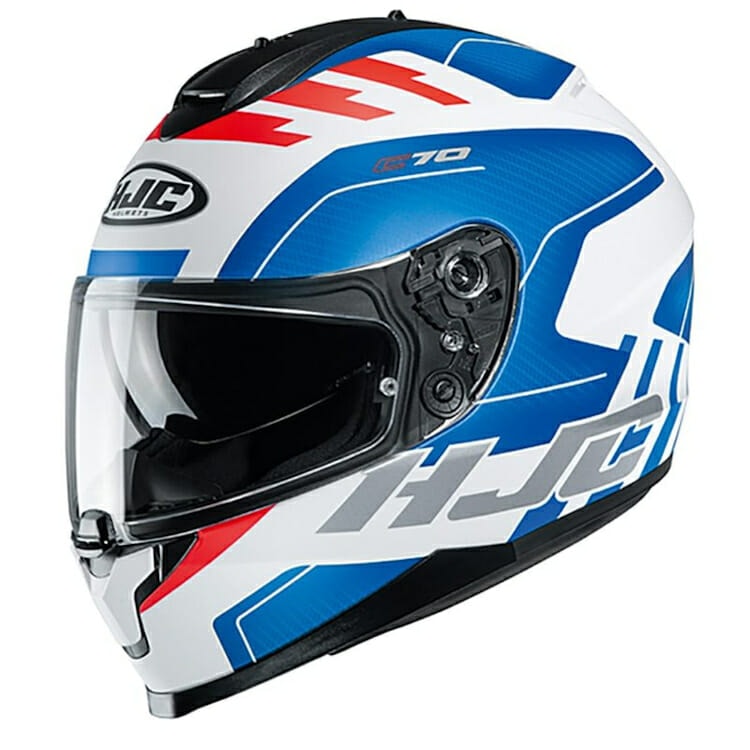
A proper helmet that meets the DOT’s Federal Motor Vehicle Safety Standard 218 should have the DOT symbol on the rear external shell, or SHARP or ECE logo depending on the region. Snell Foundation or ANSI-rated helmets should have their respective logos on the inside of the helmet.
For 2020, one of the best values for safety helmets we recommend is the HJC C70. This polycarbonate shell helmet has an impressive SHARP 5-star rating, as well as DOT and ECE certification. At $150, it’s a great all affordable option for an all-around helmet. For our safest helmet recommendations for 2020, you can see the rest here.
Jacket
Motorcycle jackets are not just for fashion or comfort. Your torso (chest, back and abdomen) make up the biggest part of your body, and a proper motorcycle jacket is your road armor.
When it comes to safety, a general rule of thumb is the thicker the better. Extra thickness translates to better abrasion resistance and even impact cushion, which is why professional or racing jackets are noticeably thicker than lightweight or general purpose jackets.
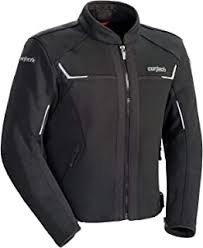
There’s also safety labeling to consider. While US motorcycle clothing doesn’t have a federal standard, a CE mark indicates conformity to the EU’s EN1621 safety standard, while an AS mark applies to the Australian equivalent.
The Cortech Piuma is a good general-purpose leather jacket. This sport cut jacket is constructed out of top-grade Monaco cowhide leather that’s up to 1.4mm thick for better abrasion resistance and long slides. There are removable CE-approved level 2 armor in the shoulders, elbows, and back area, and the garment is double- and triple-stitched with high-strength bonded nylon. Fine attention to details like shoulder-mounted air vents, neoprene collar, and generous handwarmer pockets make this a jacket of style, substance, and safety. Click here to see the list of our recommended leather motorcycle jackets for 2020.
Pants
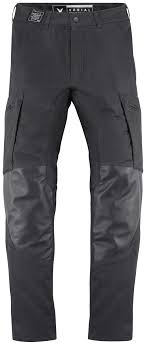
Jeans are usually considered all-around pants… but not for riding. True motorcycle riding pants should offer a good combination of comfort, ventilation, and of course, protection from road contact. After all, the lower half of your body make up half of your skin surface area.
Like motorcycle jackets, motorcycle riding pants come in similar materials like textile, leather, or denim, with Kevlar reinforcement in critical areas for impact and abrasion protection. In addition, good visibility and long-term durability to the elements are key considerations, things that are not normally found in everyday pants.
The Icon 1000 Varial is unlike most motorcycle riding pants. Where most pants use Kevlar, Icon chose to break the mold by blending coated nylon Cordura denim with leather reinforcements. Further upending the norm of loud riding pants, the Varial uses discreet impact protectors and clever placement of reflective trim patches that are only visible to motorists. The result is a stylishly stealthy riding pant that could be mistaken for everyday casual wear.
Gloves
Did you know that the most expensive part of NASA spacesuits are gloves? This is because they require manual dexterity, in addition to withstanding the rigors of space.
While motorcycle gloves don’t carry the same price tag, they work on the same concept. Riding gloves need to be pliable and flexible, yet tough enough to withstand severe impact. After all, our natural reaction in the event of a fall is to catch ourselves with our hands.
Like helmets, motorcycle gloves come in a range of designs and materials. These include urban riding gloves for everyday riding, touring gloves that offer a mix of protection, ventilation, and four-season comfort, and full race gloves that use cutting edge materials for lightweight construction and pro-level impact protection.
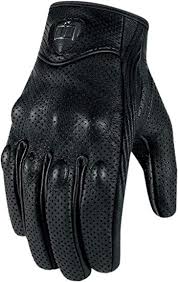
For urban riding, we recommended Icon’s Pursuit Touchscreen gloves. These tastefully designed gloves use perforated sheepskin for a good conforming fit and battle hide goatskin leather in the palms for durability. As the name suggests, it has Touchtec leather at the fingertips for using touchscreens devices. Note that while all Icon Pursuit models use perforated leather for warm-weather comfort, the Stealth Black color uses solid leather.
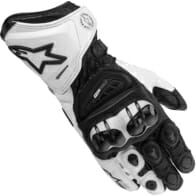
For unmatched safety, there are Alpinestars GP Pro R3 full race gloves. Where most race gloves use premium materials for unmatched protection and performance, this one uses exotic materials, and it doesn’t skimp on them. It boasts a mix of cow, goat, and kangaroo leather in different areas of the palm for exceptional abrasion resistance, durability, and tactile feedback. The entire glove is designed for MotoGP-style impacts, with a Dynamic Friction Shield on the cuff and aramidic lining on the backhand and landing zone.
Other design details from its racing roots include finger bridges to prevent finger roll and separation in case of a slide; side reinforcements with palm hard slider; and a long reinforced cuff for extended coverage. The gloves are CE-certified for CAT II Level 2, KP.
Boots
A sensible pair of riding boots can mean the difference between your bike or a wheelchair. Motorcycle-specific riding boots are designed with safety features like ankle protection, improved torsional stiffness to reduce flexing, and oil-resistant soles to prevent slipping.
Other features include interior laces to prevent accidental tangling while riding, shifter pad to guard against wear from the shift lever, and high abrasion materials that are waterproof yet breathable for riding comfort.
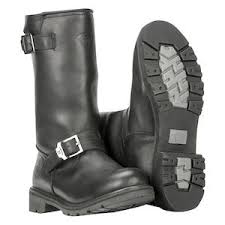
For cruising or touring, the Highway 21 Spark harness-style boot is a good option. It uses 100% full-grain leather and Goodyear welt construction for exceptional durability, with HiPora waterproof lining and a full-length cushioned sock lining inside for comfort. It also comes with a removable insole, and the oil-resistant rubber sole can be resoled.
For sport or racing, Joe Rocket’s Speedmaster 3.0 offers a lot of value besides form. These sharp-looking racing boots have an upper part made of perforated split grain leather for breathability, while the midsole is made of TPU reinforced with steel shank to strike a balance between stiffness and flexibility.
Reinforced areas include a titanium ankle plate; magnesium sliders on the toe, heel, and calf; and injection molded shin, heel, and ankle armor.
8 Guidelines for Road Rash Safety
Use the following guidelines to keep yourself as safe as possible.
- If you’re wearing proper safety gear, ride out the slide instead of trying to stop it. This will dissipate the kinetic energy through friction with the road surface, which is better than coming to a sudden and bone-jarring stop than can be harmful to your joints and internal organs.
- Note the location of abrasion pads on your gear, so you can assume the proper body posture in case of a slide. Areas to note include back, elbows, knees, palms, and other reinforced regions.
- Try to keep your head above the road surface during a slide. While helmet outer shells are designed for abrasion, repeated impact with road deformities such as bumps, dips, and gravel while sliding can cause brain and neck injury.
- Keep a first aid kit either on your bike or on your person. If you don’t have much room, the minimum items to carry are a pair of nitrile gloves, Band-Aid, at least two gauze pads, and a pain reliever. A Swiss Army knife or multitool is also handy so you won’t have to carry dedicated scissors, trauma shears, or tweezers.
- When rendering aid to another rider, secure the area first. Watch out for oncoming traffic and deploy a warning sign or marker before helping.
- If the rider is unconscious or in an unnatural position, avoid moving or dragging their body unless the situation makes it absolutely necessary.
- Assess road rash injury by severity. Look for signs of second- and third-degree injuries such as torn skin, gaping wounds or blood flows, and spurts. Treat third-degree rashes first by cleaning and compressing the wound, and work your way downwards.
- Even in cases of minor first-degree road rashes, when in doubt, of course, seek medical help.

